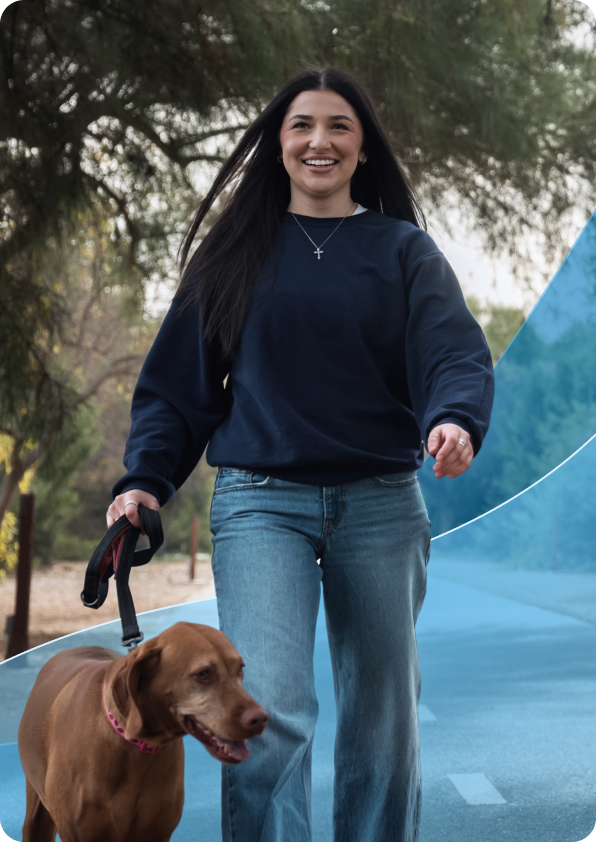CAREGIVER SUPPORT
Recovery support for caregivers
You’re the steady hand, the sounding board, the comic relief, and the quiet hero in someone’s comeback story

“You're making a difference. One day at a time.”
Zimmer Biomet Chief Movement Officer

A real Personalized Knee® caregiver experience

Caregiving: The Other Superpower

Caring for Someone with a New Knee
Being a caregiver isn’t about having all the answers—it’s about showing up, even when you’re tired, overwhelmed, or googling “how to help someone recover from knee surgery without losing your mind.” It’s not always glamorous but it matters—you matter.
What does a caregiver do, exactly?
You may be helping your “patient” through recovery—physically, emotionally, and sometimes even logistically.
Daily Support
You may be helping with home adjustments before surgery, mobility (like getting in and out of bed, walking, or using assistive devices), and daily tasks such as meals, bathing, dressing, and hygiene.
You might also assist with managing medications, tracking schedules, and offering encouragement throughout the rehabilitation process.
Emotional & Mental Support
You could be providing encouragement and reassurance during tough moments or become a sounding board when the patient feels frustrated, scared, or tired and help maintain a positive outlook and sense of normalcy.
Logistics & Coordination
You might help by scheduling and attending appointments, communicating with healthcare providers or organizing transportation, meals, or household tasks.
Physical therapy
By helping them stick to their physical therapy plan, you’re not just aiding their progress—you’re also showing them they’re not alone.
Learn the exercises: If the team is okay with it, join a few therapy sessions. It’s a great way to learn what they should and shouldn’t be doing. At home, help keep them on track by supporting their therapy routine.
Support movement: Keep moving. Aim to have your “patient” up every hour, even for a short walk. Start with the distance they managed in the hospital and slowly build from there.
When to go outside: In the first few weeks, stick to safe indoor walking. Once their doctor or therapist gives the green light—and you’ve got a safe spot—they can begin walking outside.
You’re caring for yourself, too

A real Personalized Knee® caregiver experience
If you’ve agreed to provide care for a friend or family member, know that it's a big decision and a long recovery so be proactive about your own stress management plan.
Be proactive
Preparing ahead of time can help reduce stress, which may also lessen its physical impact. Talk to your doctor about stress-management strategies tailored to your role.
Support for caregivers
You don’t have to do it alone. Find helpful answers and guidance on The Ready Patient by Zimmer Biomet, where you’ll find educational articles on recovery, mobility, and what to expect. You can also connect with others through support groups like , reach out to family and friends, or consider in-home help for wound care and physical therapy.
